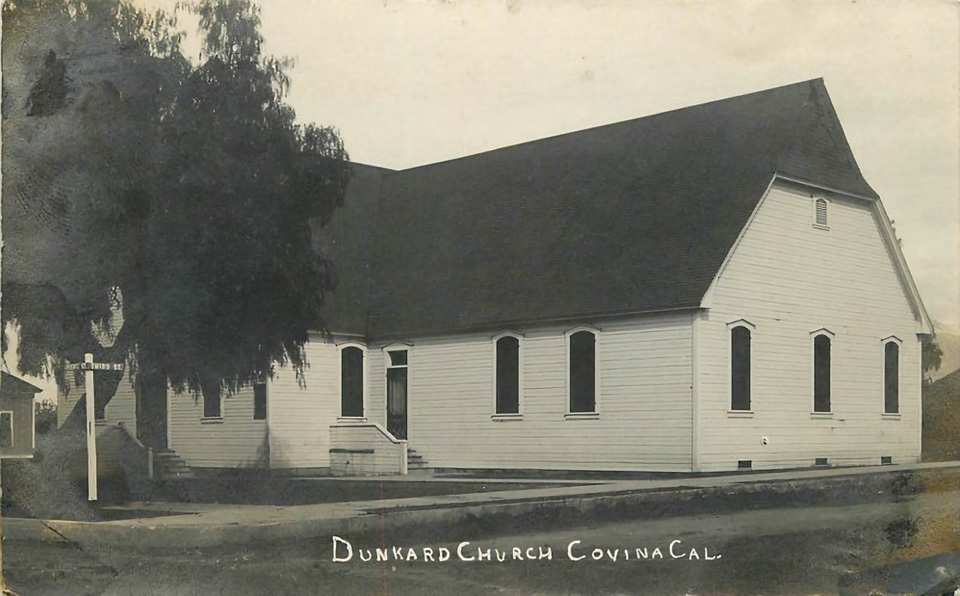...by guest author Glenn Reed
Recently Karl Blackmun, one of our new members gave us a copy of his great grandmother's memoirs of her life in Covina in the early days. Her name was Clara Margaret Eckles (1874-1966). She married Carl Warner, best known in Covina as the younger brother of Elwin Perle Warner, long time prominent Covina grocer. Her memoirs paint a picture of life in this area before 1900 and relates some of her contacts with such early residents as Antonio Badilla, Lucky Baldwin, and Joseph Phillips.
Of particular interest is her account of how Covina received its name. Most of us have heard that the name came from the location, as a cove between the San Gabriel Mountains and the San Jose Hills at least partly filled with vines. After all, Baldwin Park was for many years called Vineland until the residents changed the name in order to curry the favor of Lucky Baldwin.
Here is the story in the words of Clara Eckles:
The Dunkard Brethren were colonizing Covina, only that wasn't its name yet. One day Phillips called father over to do some surveying and to give some advice. It seemed the colony of Brethren wanted to name their section, "Los Covinas." They thought it was Spanish for "The Little Cove." "Los" was the only Spanish part of it, and Mr. Phillips didn't want to hurt their feelings by pointing out their mistake. Besides, there wasn't any cove present! So a compromise name was suggested, that of "Covina," the leaders were consulted, and the town named before it had time to catch its breath.
I think that is a better story for the naming of Covina than any that I have heard, and besides, it is an account from someone alive at the time; I am accepting it. More of Clara's memoirs later.
This article was originally published in the June, 2018 issue of "The Covina Citrus Peal," the official newsletter of the Covina Valley Historical Society, and is reproduced here with the permission of the author, Covina historian Glenn Reed.

German Baptist Brethren church on Third at Puente, circa 1920.